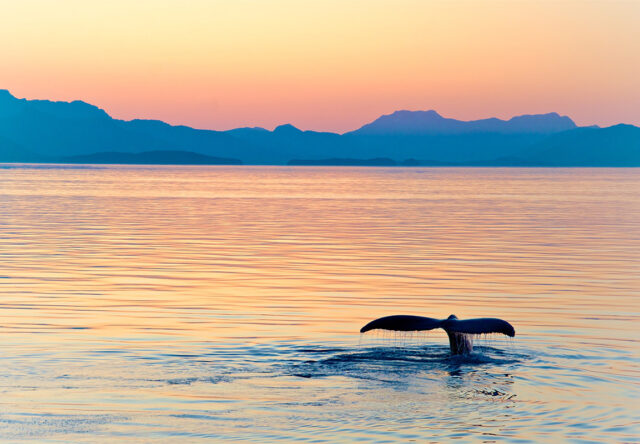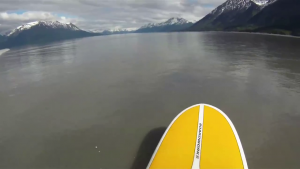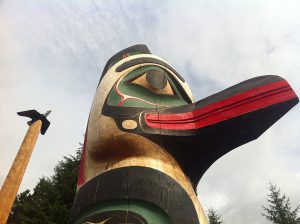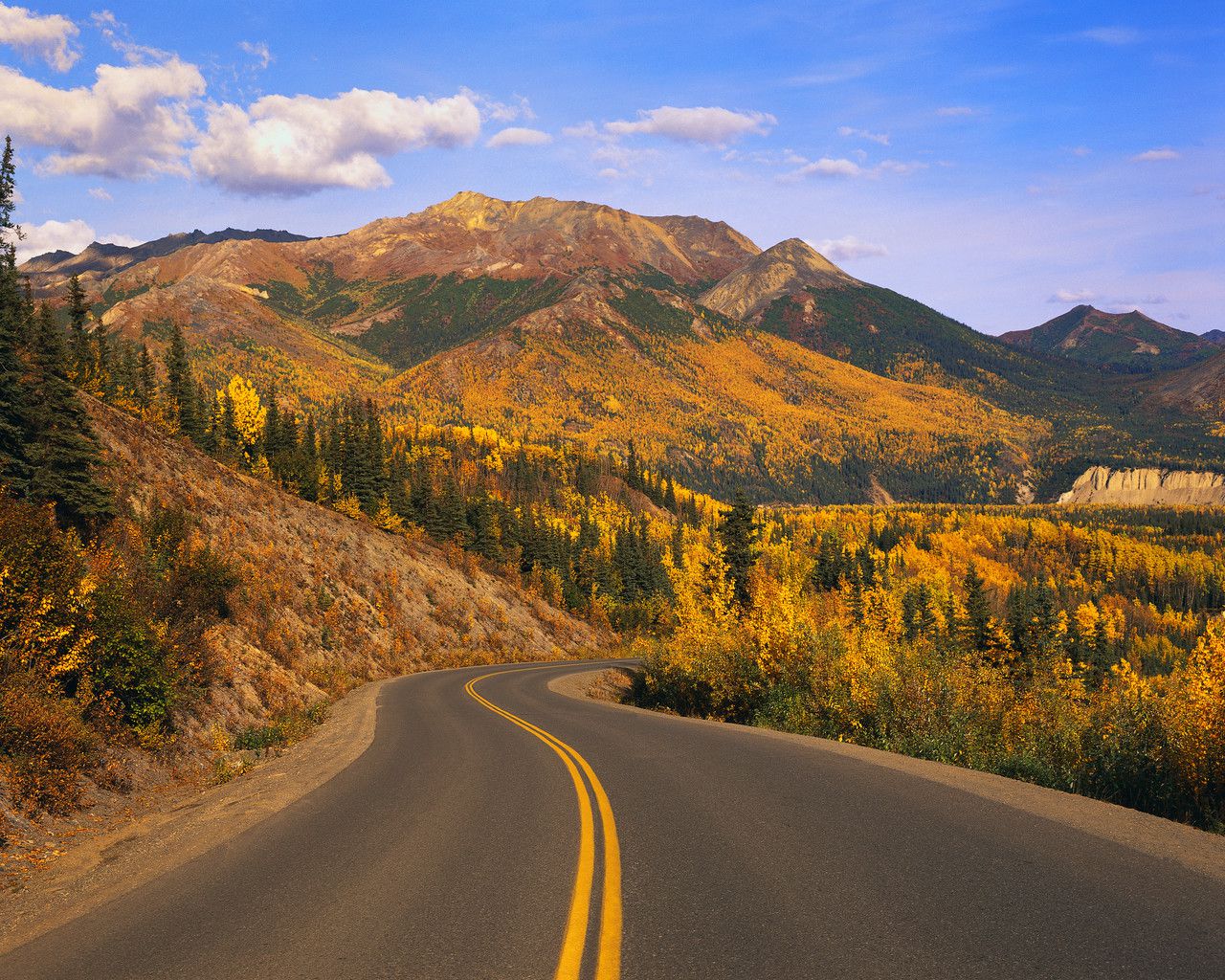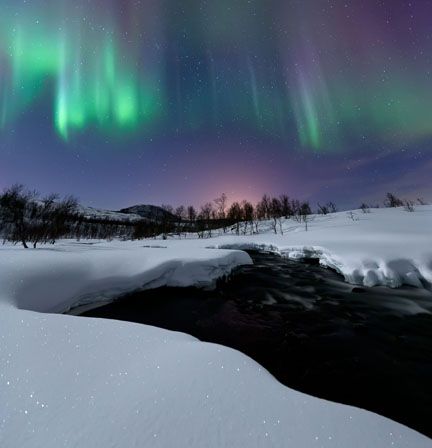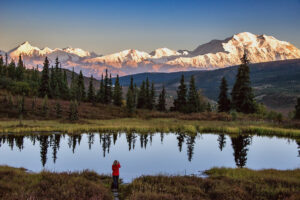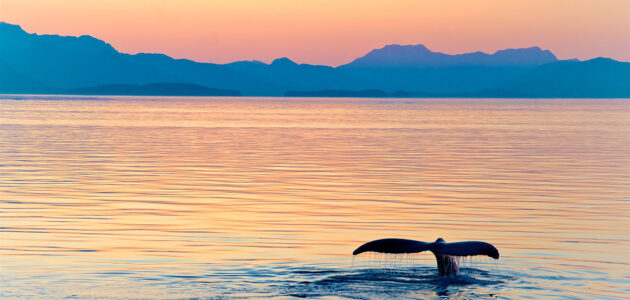
With more coastline than any other U.S. state, Alaska is full of opportunities to see marine creatures in their native habitats. Once you’ve witnessed the gigantic fluke of a whale cresting the surf, you’ll be fascinated by the many species it is possible to view off of the stunningly rugged coast. Where to start? Let us introduce you to the whales in Alaska.
North Pacific Bottlenose Whale
Scientific Name: Hyperoodon ampullatus
Identification: North pacific bottlenose whales are large — the males can be up to 39 feet long, which makes them second only to the sperm whale in size among toothed whales. They are gray, but from the top appear a deep blue. They have rounded foreheads, and the skin of the male whales is often deeply scarred from past battles with other males over territory. These whales are fighters!
Social patterns: The north pacific bottlenose whales travel in small groups of two or three whales and feed on squid and small fish.
Migration patterns: Much of their migration patterns depend on the season. In the summertime, they are typically found in the northern parts of the Pacific Ocean, and in the winter, they migrate south to warmer waters like the Gulf of California.
Mating patterns: This species doesn’t reach maturity until seven to 11 years old. Females will birth a single calf every two or more years during the spring and summer and are typically in gestation for 12 months.
Cool facts: When fishing for their dinners, pacific bottlenose whales can make dives of over 3,000 feet, often not emerging again for up to an hour.
Where to find a North Pacific bottlenose whale
These whales are best spotted in Alaska off the coast of the remote Aleutian Islands.
Best time to see them: This species can be spotted year-round but more often in Alaska’s summer months, May through September.
Best place to watch them: Near the shorelines of the state’s bays and inlets.
Beluga whale
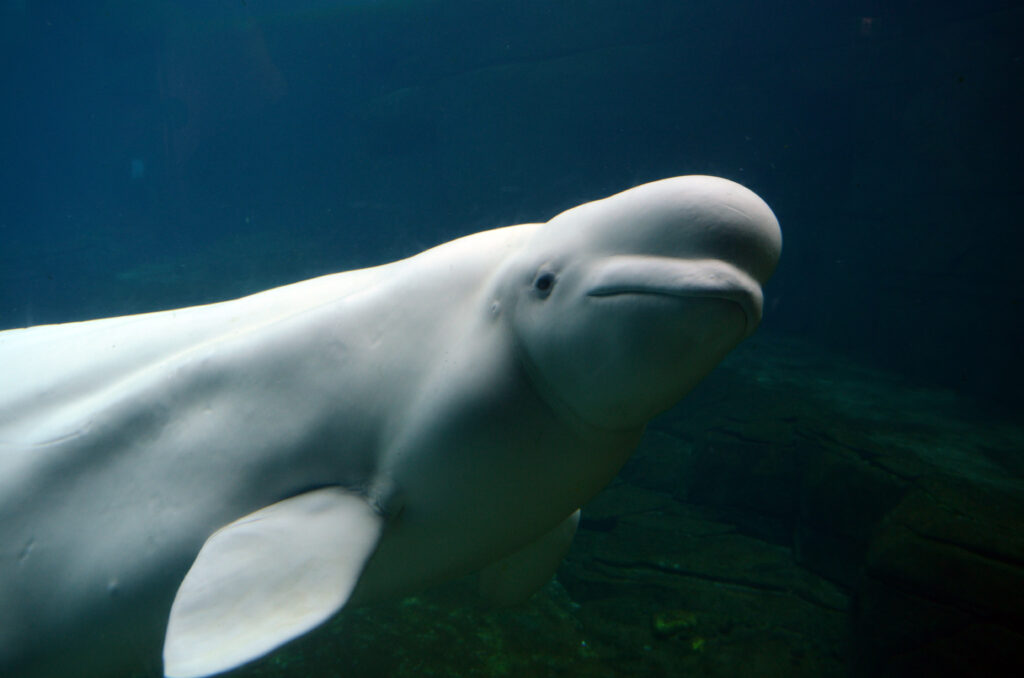
Scientific Name: Delphinapterus leucas
Identification: The famous beluga whale turns a striking white color as it ages and is smaller than many of the other Alaska whales. Adult belugas are generally 12-14 feet long and have friendly looking curved faces.
Social patterns: Belugas are social and speak to their small traveling groups with a series of clicks and other odd noises. They can even mimic sounds! For meals, belugas prefer a diet of crustaceans, worms, and fish.
Migration patterns: In autumn, beluga whales will migrate south as the waters get colder in the Arctic. In the spring they return to the northern waters to feed in areas where the ice has broken up. During the summer, they most commonly feed near river mouths and sometimes even go upriver.
Mating patterns: Beluga whales reproduce seasonally, usually between April and May and give birth in the late spring to early summer. This species is not monogamous.
Cool facts: The beluga whale is a close relative of the elusive “narwhal,” or unicorn whale. It can turn its neck in all directions, even behind it.
Where to find beluga whales
Belugas can be found in the Cook Inlet near Kenai Fjords National Park. The population of belugas here has been threatened, and efforts are being made to protect the rare species from further decline.
Best time to see them: When the salmon are running in the Cook Inlet, from mid-July through August.
Best place to watch them: The beluga whale is most often spotted south of Anchorage along the Turnagain Arm and in the Cook Inlet.
Bowhead whale
Scientific name: Balaena mysticetus
Identification: Bowhead whales are a perfect example of something “whale-sized.” They can grow to lengths of 65 feet and weigh up to 150,000 pounds! Their gigantic heads make up a third of their total length, and they use it to break the Arctic ice to breathe.
Social patterns: Using baleen, bowhead whales consume zooplankton for nourishment. The whales use calls to navigate the icy waters of their home and to stay connected with one another even when miles apart.
Migration patterns: This species of whale typically spends the summer in the Beaufort Sea and then migrates west along the continental shelf to Point Barrow from August through October. From there they cross the Chukchi Sea and travel south of the Russian coast, passing the Bering Strait in November.
Mating patterns: Reproductive behavior has been observed year-round. Male bowheads don’t reach maturity until 25 years of age and females typically have a calf every three to four years with a gestation period of around 13 months.
Cool facts: Limited hunting of Alaska’s bowhead whales is permitted under the Alaska Eskimo Whaling Commission. Talk about thick skins — the bowhead’s protective layer of blubber and skin is the thickest of any animal in the world. The points of harpoons, which were used to hunt whales, have been discovered in the skin of bowhead whales in the present, meaning that these huge creatures live for more than 100 years.
Where to find bowhead whales
Bowhead whales live their whole lives in the waters of the Bering, Chukchi, and Beaufort Seas.
Best time to see them: In the Arctic, the best time to spot a bowhead whale is in the springtime when the weather is more bearable.
Best place to watch them: In western Alaska as icepacks recede along the coast and the whales come closer to the shore to feed.
Fin whale
Scientific name: Balaenoptera physalus
Identification: Fin whales are the second-largest species of whale in the world, weighing a whopping 40-80 tons and stretching out to lengths of 85 feet. They are streamlined and have V-shaped heads, with white skin surrounding their undersides while the rest is dark gray or black.
Social patterns: Fin whales hunt and travel in family groups of two to seven whales, gorging themselves on small fish such as krill by opening their mouths, sucking in a huge volume of water, and then using their baleen to filter out any unwanted items.
Migration patterns: The majority of this species migrates from the Arctic feeding areas in the summer to more tropical climates to breed and birth. Fin whales travel in the deep open oceans, away from shorelines, making it more difficult to track exact migration patterns.
Mating patterns: The fin whale typically mates between November and January in the northern hemisphere where the gestation period is usually around 11 months when one calf is born.
Cool facts: Fin whales occasionally cross-breed with blue whales. Each one has a unique color pattern on its back, which helps with identifying individuals.
Where to find fin whales
Fin whales can best be found in the deep waters west of the Kenai Peninsula in Alaska.
Best time to see them: While spotting a fin whale is rare, chances increase of spotting them between July and September.
Best place to watch them: Since the fin whale is most commonly found in deep waters, the best chance of spotting one is from a boat off the coast of Alaska.
Humpback whale
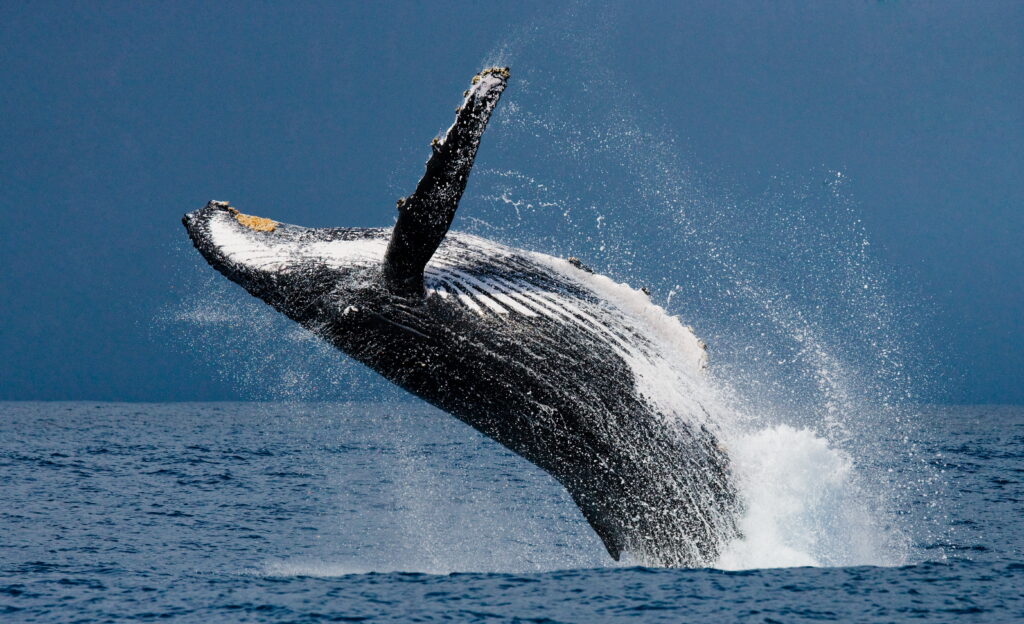
Scientific name: Megaptera novaeangliae
Identification: Humpback whales have a gray and white coloration pattern and are renowned for their huge and distinctive pectoral fins. You may recognize them by their “humped back” appearance and the knobby skin of their heads. Their fins, or “flukes,” provide a distinctive fingerprint for each unique humpback whale.
Social patterns: Humpback whales travel great distances between their summer feeding and winter mating grounds. Male humpback whales sing complex songs with many tones to impress female humpback whales. The song completely changes year to year. Sometimes, humpback whales use air bubbles to confuse fish and make it easier to catch their dinners.
Migration patterns: Humpback whales in the North Pacific migrate every winter from Alaska to Hawai’i, often completing the 3,000-mile journey in just 28 days.
Mating patterns: Reproductive practices of humpback whales have never been directly observed but typically take place in the winter months in tropical climates. When giving birth to a calf, females prefer warm and shallow waters usually near offshore reefs, with a gestation period of 11 months.
Cool facts: The mating songs of the male humpbacks can be heard up 20 miles away!
Where to find humpback whales
In Alaska, humpback whales can most commonly be seen in the southeastern region of the state, the Kodiak Archipelago, Prince William Sound, the Aleutian Islands and the Bering Sea.
Best time to see them: In Alaska, the best time to see humpback whales is from April to November.
Best place to watch them: A lot of humpback whales can be spotted in the Inside Passage, as well as the Barren Islands between Kodiak and Homer where they bubble feed in big groups in the summer.
Gray whale
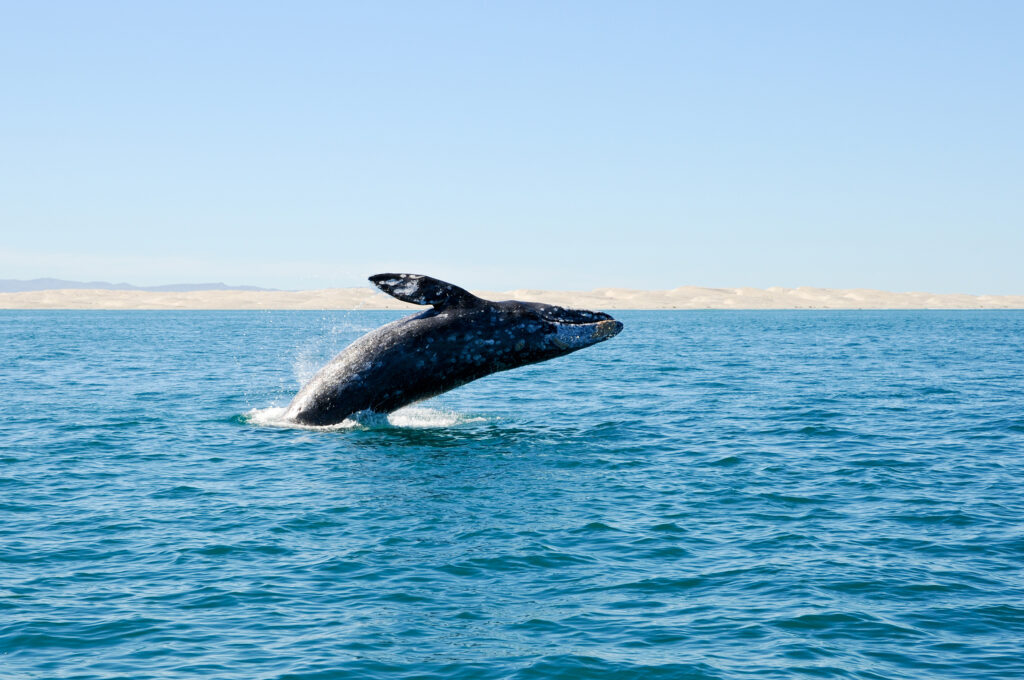
Scientific name: Eschrichtius robustus
Identification: Gray whales are — no surprise — gray, and their skin features white and yellow patches. They do not have a dorsal fin, which are the fins most whales wear on their backs. Instead, gray whales have lines of bumps.
Social patterns: Gray whales migrate along the west coast of the United States every year and prefer feeding on creatures that live along the ocean floor. This makes them the only bottom-feeding whale.
Migration patterns: The gray whale annually migrates between the lagoons of Baja, California, and Mexico and then swims up north in the summer to feed in the Arctic.
Mating patterns: Gray whales typically reach reproductive maturity between five- to 11-years-old. Females typically give birth to one calf after carrying it for 12 to 13 months.
Cool facts: Those who have tried to hunt gray whales call them the “devilfish” because they are fierce and fearless fighters.
Where to find gray whales
In Alaska, gray whales are most commonly found right outside of Nunivak Island as they head toward St. Lawrence Island.
Best time to see them: Gray whales are the first whales to arrive in the springtime in April.
Best place to watch them: In Alaska, the best place to watch a gray whale is in Resurrection Bay, outside of Seward, located in the Kenai Fjords National Park.
Orca whale
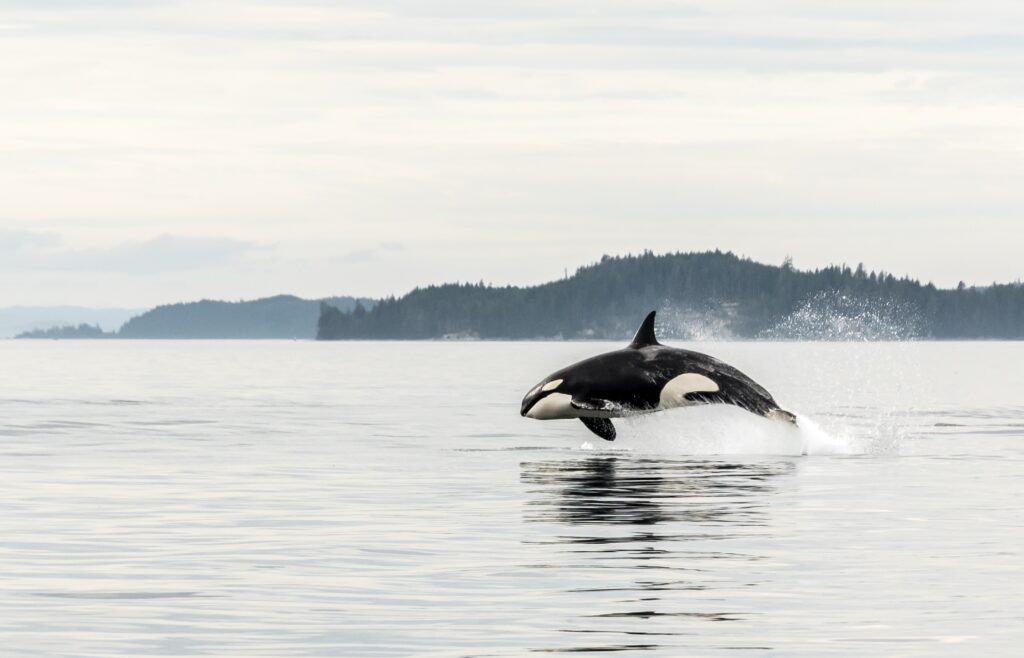
Scientific name: Orcinus orca
Identification: Orca whales, which are also known as killer whales, are some of the most famous whales around. You’ll be able to pick them out easily when you see their black and white color pattern and the white spots over their eyes.
Social patterns: Orcas travel in social pods based on families — each whale travels with its mother and other family members. Because orcas swim in families and use teamwork to hunt, some consider them the wolf pack of the ocean.
Migration patterns: As the ice starts to melt, orca whales move north in Alaska through the Bering Strait in the spring and then migrate south in the fall.
Mating patterns: Female orcas can be ready for mating several times a year. There is no regular pattern for the reproductive cycle of orca whales
Cool facts: Although we think of orcas as whales, they are actually members of the dolphin family. They may have a killer reputation, but so far, no orca in the wild has ever killed a human.
Where to find orca whales
Orca whales can be found all along the coastal waters of Alaska.
Best time to see them: Much like other whales, the best opportunity to spot an orca whale is in the summer between April and September.
Best place to watch them: Juneau, Alaska, offers some of the best spotting opportunities for orca whale watching.
Sperm whale
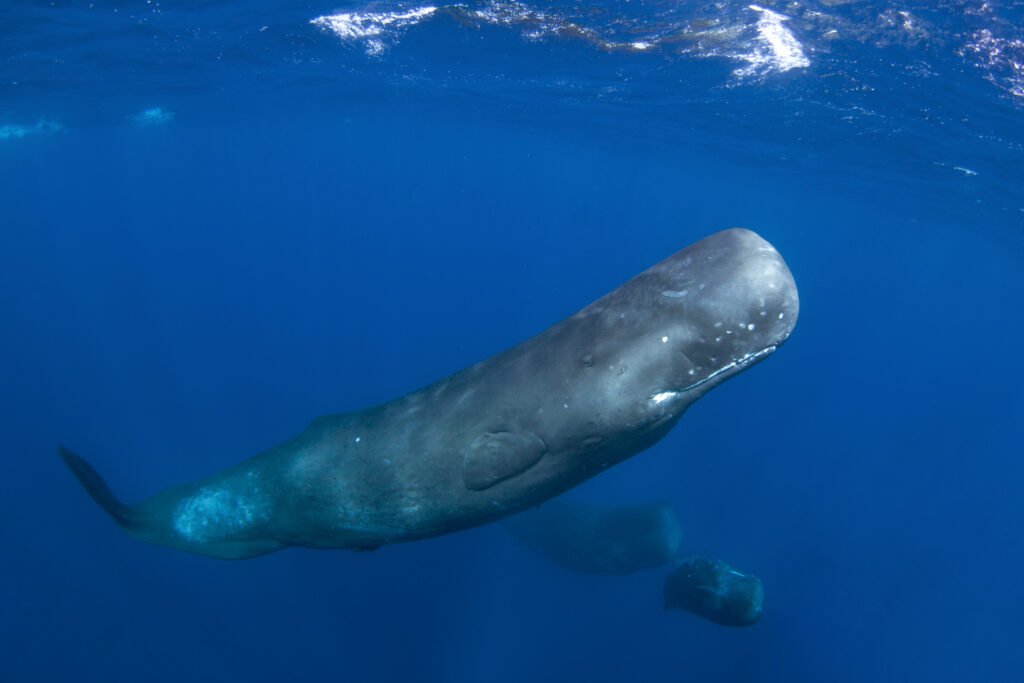
Scientific name: Physeter macrocephalus
Identification: Besides their huge size and large heads taking up about a third of their bodies, sperm whales can be picked out by the single blowhole they have near the front of their heads on the left.
Social patterns: Sperm whales make deep dives into the ocean to feed on larger fish and squid. Female sperm whales tend to travel in family groups, while males travel together to mate and feed. Eventually, older male sperm whales may end up swimming the ocean deep alone.
Migration patterns: The patterns of migrations depend on the population, but adult males typically make long oceanographic migrations into temperate waters, where females and young whales tend to stay in tropical waters year-round.
Mating patterns: Female sperm whales only mate once every four to 20 years until they reach about 40 years of age. The arrival of a calf is a social event for sperm whales. The rest of a pod will form a protective barrier around the mother and her calf.
Cool facts: Sperm whales are distributed throughout the world — all the way from the tropical equator to the north and south poles.
Where to find sperm whales
In Alaska, sperm whales can best be found around the Gulf of Alaska, the Bering Sea and surrounding the Aleutian Islands.
Best time to see them: During the summer months of May through September.
Best place to watch them: One of the most common spots to see a sperm whale is in Resurrection Bay in Kenai Fjords National Park.
The best whale-watching spots in Alaska
Visiting during the Alaska whale watching season is one of the best experiences due to the high accessibility of multiple viewing options as well as excursions for visitors to book. Watching whales gracefully swim in their natural habitat is one of the most blissful experiences that Alaska has to offer. If you have ever thought about taking a whale watching trip in Alaska, consider heading to one of the places below to get the best experience.
Juneau, Alaska
Juneau is one of the best places for whale watching in Alaska due to the nutrient-rich waters attracting all kinds of whales during the summertime. In Juneau, temperatures typically reach the low-to-mid-60s but can also reach up to 75 degrees. Out on the water visitors can look for humpback and orca whales.
Resurrection Bay, Alaska
Located south of Seward in the Gulf of Alaska and part of the Kenai Fjords National Park, Resurrection Bay is one of the most reliable places to view marine life in Alaska, including whales. There, visitors can see sperm, orca, gray and humpback whales. During prime whale watching season, the weather is a mix of sunshine and overcast, the temperatures typically reach an average of almost 60 degrees.
Prince William Sound, Alaska
Located outside of Whittier and Valdez, Prince William Sound boasts rich concentrations of fish, optimal for whale feeding. In prime whale watching season, the temperature can reach the mid-50s with a typical morning fog that usually subsides by the afternoon. Here, visitors can expect to see pods of orca, humpback and fin whales.
Anchorage, Alaska
The state’s largest city, Anchorage, and the Cook Inlet is a local favorite place to go whale watching. Along the coast, beluga whales can be spotted from places such as Kincaid Park or the Tony Knowles Coastal Trail, both not too far from the Westmark Anchorage Hotel & Conference Center.
Whale watch with us
Don’t forget to book your stay at the Westmark Hotel locations where our staff can give expert advice on whale watching tours and exploration locations. For more information about Alaska’s whales, visit the Alaska Department of Fish & Game.


